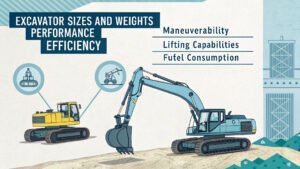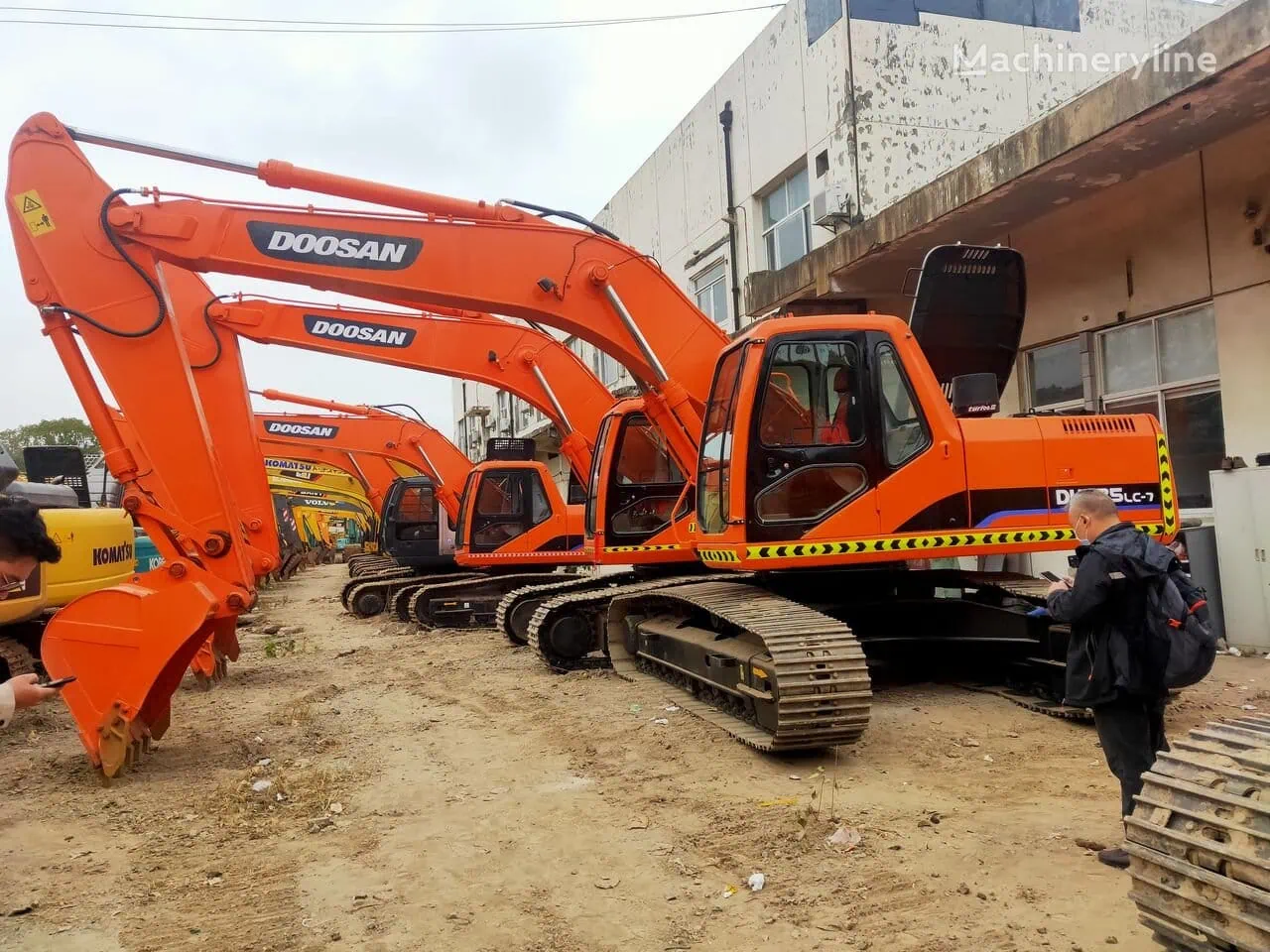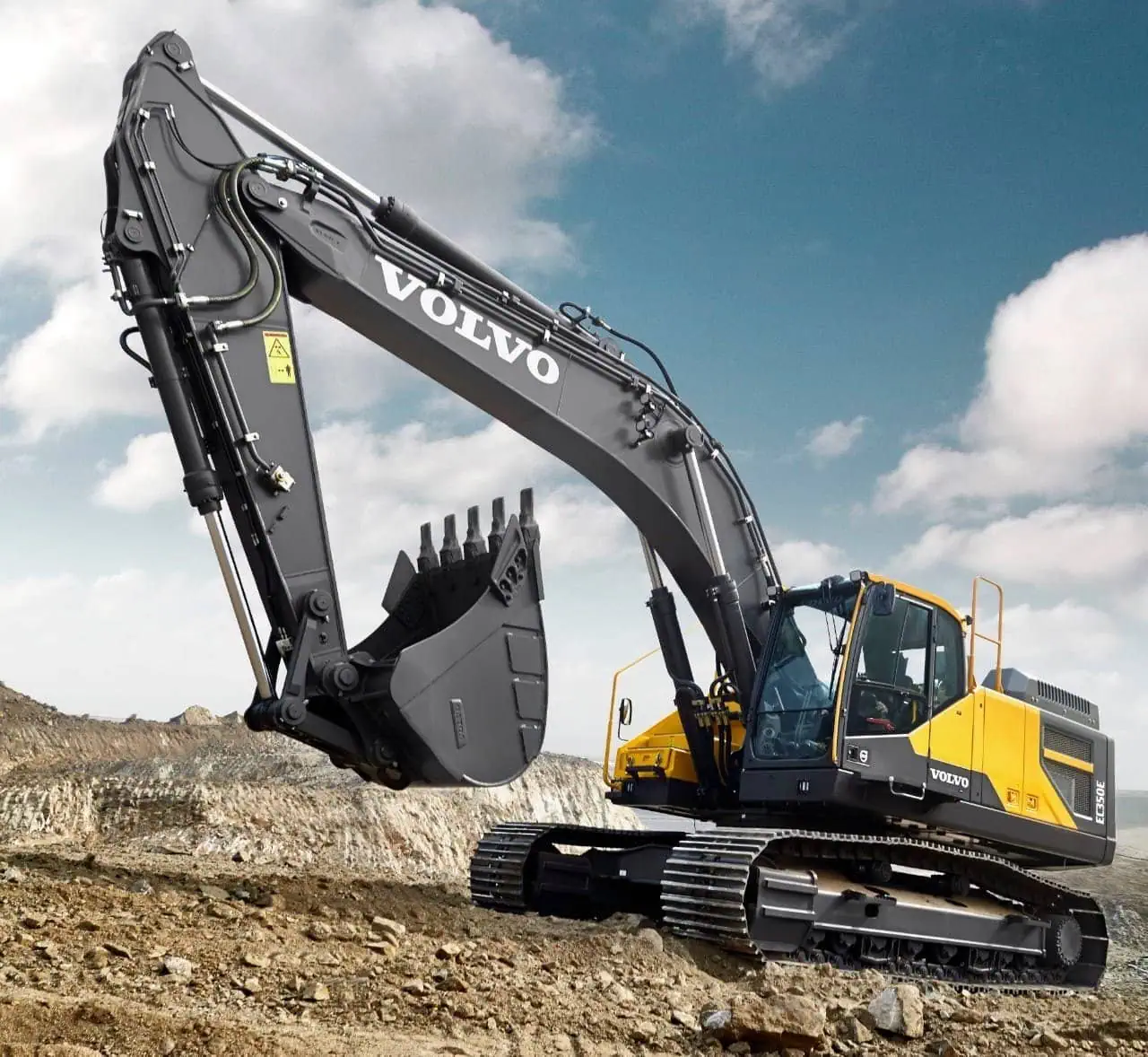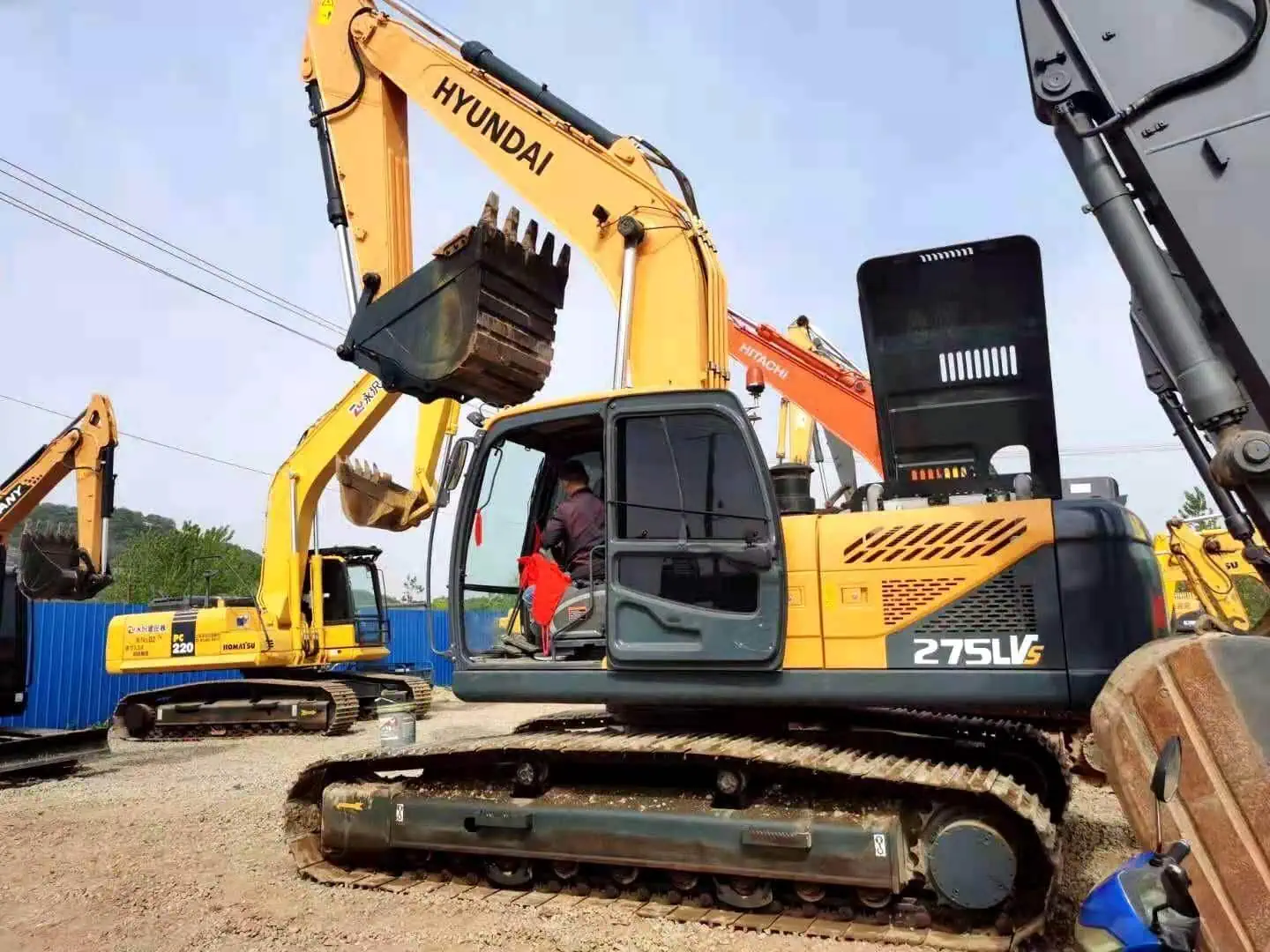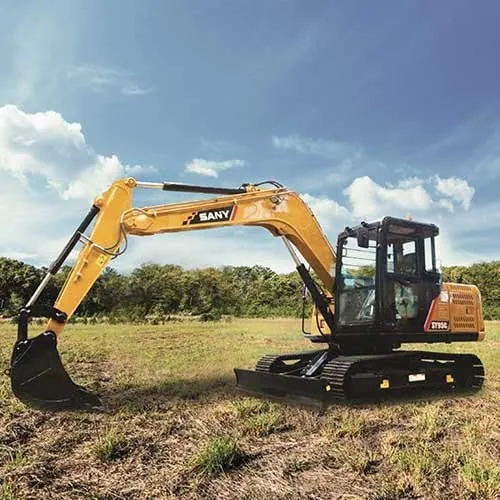Are you considering buying a Caterpillar excavator? You find that the prices of machines on the market vary greatly, from very cheap to very expensive, and you don’t know how to choose? Understanding the costs of these machines can help you make an informed choice.
As a used excavator exporter, I have deep knowledge of Caterpillar excavator price. I want to share this knowledge clearly and concisely with potential clients. By using detailed tables and comparisons, I can help them make informed decisions and get the best value for their money.
Let’s examine each of these factors in detail, accompanied by illustrative tables to provide a clearer understanding:
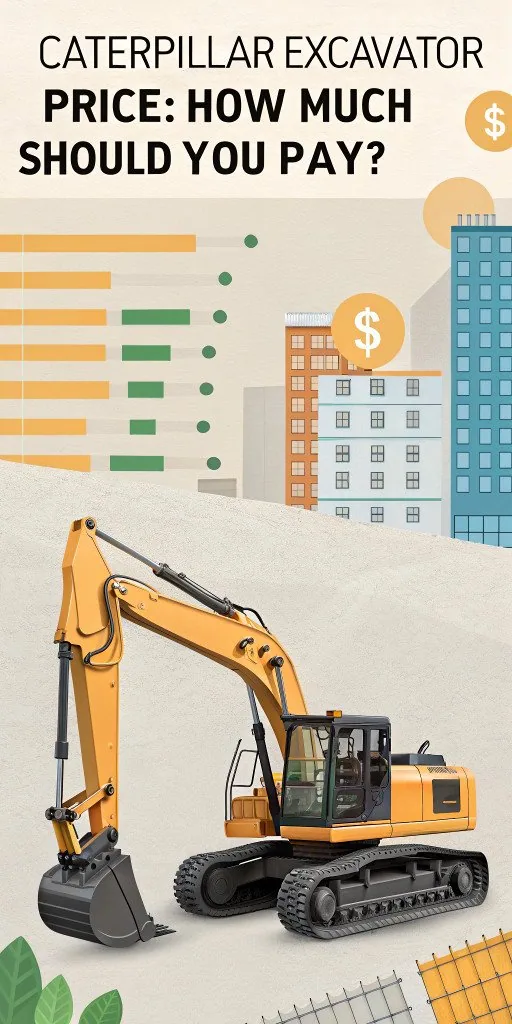
Table des matières
BasculerWhat Factors Determine the Price of a Caterpillar Excavator?
Size and Model
Chenille boasts an extensive selection of excavators, ranging from compact mini-excavators to robust mining machines. Generally, larger excavators command higher prices due to their increased capabilities and material requirements. Different models also vary in price based on their specific functions and target applications.
The following table outlines how size impacts the approximate price range of new Caterpillar excavators:
| Excavator Class | Typical Operating Weight (metric tons) | Average New Price Range (USD) | Common Applications |
| Mini Excavators | 1-10 | 50,000−50,000 – 50,000−150,000 | Landscaping, light construction, utility work, residential projects |
| Small Excavators | 11-20 | 150,000−150,000 – 150,000−250,000 | General construction, road work, demolition, commercial building projects |
| Medium Excavators | 21-35 | 250,000−250,000 – 250,000−400,000 | Heavy construction, infrastructure projects, larger-scale demolition |
| Large Excavators | 36+ | $400,000+ | Mining, large-scale earthmoving, quarry operations, significant infrastructure |
As the table shows, a compact CAT 308 mini-excavator is significantly more affordable than a massive CAT 390 excavator designed for heavy mining operations.
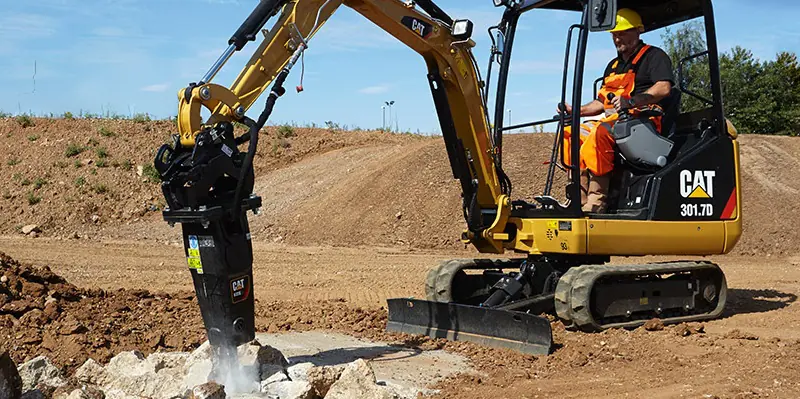
Age and Condition
The age and condition of an excavator significantly influence its price. New excavators command the highest prices, while used excavators vary widely depending on age, hours of use, and overall condition.
The following table illustrates how age and condition can impact the approximate price of a used CAT 320 excavator:
| Age (Years) | Condition | Approximate Price Range (USD) | Key Considerations |
| 1-3 | Excellent | 180,000−180,000 – 180,000−220,000 | Low hours, well-maintained, recent model, likely still under some warranty coverage |
| 4-7 | Good | 130,000−130,000 – 130,000−180,000 | Moderate hours, regular maintenance, some wear and tear, but generally reliable |
| 8-12 | Fair | 80,000−80,000 – 80,000−130,000 | Higher hours, potential for more maintenance, requires thorough inspection |
| 12+ | As-Is/Rebuildable | 50,000−50,000 – 50,000−80,000 | High hours, significant wear and tear, may require extensive repairs, sold “as-is” |
Machines with low hours, consistent maintenance, and minimal wear are more valuable than older machines with high hours and visible damage.
I recall a client from South America searching for a used CAT 320D excavator. Two machines were available, identical in model and year. However, one had 5,000 hours and was meticulously maintained, while the other had 10,000 hours and showed signs of neglect. The price difference was considerable, reflecting the discrepancy in their condition.
Features and Attachments
The features and attachments accompanying an excavator can also influence its price. Excavators equipped with advanced features like GPS, grade control systems, and quick couplers typically cost more.
The table below shows how additional features can affect the price:
| Feature/Attachment | Description | Approximate Price Increase (USD) |
| GPS Grade Control | Automated system for precise grading and excavation. | 10,000−10,000 – 10,000−30,000 |
| Quick Coupler | Allows for rapid attachment changes without tools. | 2,000−2,000 – 2,000−5,000 |
| Hydraulic Thumb | Adds gripping capability for handling materials. | 3,000−3,000 – 3,000−7,000 |
| Hydraulic Breaker | Used for demolition and breaking rock. | 5,000−5,000 – 5,000−20,000 |
Attachments like buckets, breakers, and grapples contribute to the overall cost. Some excavators come with attachment packages, while others require separate purchase.
A client from the Middle East needed a CAT 336 excavator with a hydraulic hammer attachment for demolition. Adding this attachment increased the overall cost but was crucial for his specific tasks.
Market Demand
Market demand influences excavator prices. High demand and limited supply drive prices upward, while low demand and abundant supply can lead to price reductions.
The following table provides a general idea of how market conditions influence price:
| Market Condition | Description | Impact on Price |
| High Demand | Strong construction activity, limited excavator availability, long lead times for new machines. | Prices tend to be higher, negotiations are more difficult, machines sell quickly. |
| Low Demand | Slow construction activity, abundant excavator availability, short lead times for new machines. | Prices tend to be lower, negotiations are easier, machines may sit on the market for longer periods. |
| Regional Boom | Specific geographic areas experiencing rapid growth in construction or infrastructure projects. | Prices may be inflated in these regions due to increased demand and limited local supply. |
| Economic Downturn | Overall economic slowdown impacting construction activity and equipment demand. | Prices may decline as businesses reduce capital spending and equipment utilization. |
Regional factors also influence demand. Construction booms in certain areas increase excavator prices in those regions.
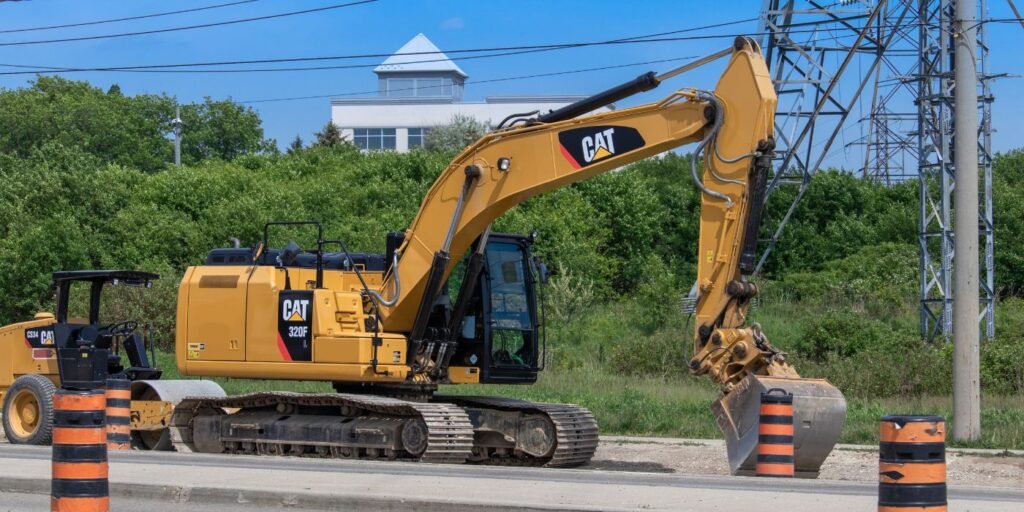
New vs. Used Caterpillar Excavator Price: What’s the Difference?
What’s the price disparity between purchasing a new or used Caterpillar excavator? This question frequently arises among prospective buyers. The decision hinges on budget constraints and specific operational requirements.
New Caterpillar excavators command higher prices than used ones. However, they offer the latest technology, comprehensive warranties, and reduced risk of immediate repairs. Used excavators provide a lower upfront cost but may necessitate increased maintenance and have limited or no warranty coverage.
The following side-by-side comparison highlights the key differences:
| Feature | New Caterpillar Excavator | Excavatrice de chenilles usagées |
| Purchase Price | Higher | Lower |
| Technology | Latest features and technology | May lack the latest advancements |
| Warranty | Full manufacturer’s warranty | Limited or no warranty coverage |
| Maintenance | Lower initial maintenance costs | Potentially higher maintenance costs, depending on condition |
| Depreciation | Faster depreciation in the first few years | Slower depreciation |
| Repair Risk | Lower risk of immediate repairs | Higher risk of repairs, requiring thorough inspection |
| Key Benefit | Peace of mind, access to the newest technology, and potentially higher resale value. | Cost savings, potentially good value for money if the machine is well-maintained. |
| Ideal For | Businesses prioritizing reliability, advanced features, and long-term ownership. | Businesses with budget constraints, experienced mechanics, and a willingness to accept some risk. |
To illustrate the price gap, a new CAT 320 excavator might cost 250,000−250,000 – 250,000−350,000, depending on configuration. A used CAT 320, based on age and condition, could range from 80,000to80,000 to 80,000to200,000.
Choosing between new and used depends on your budget, risk tolerance, and operational needs. A new machine may be best if you want the latest technology and peace of mind. A well-maintained used excavator can be a great value if you’re on a budget and willing to accept some risk.
I often advise clients to carefully inspect used excavators before buying. Verify the engine, hydraulics, and undercarriage. Request maintenance records and consider a mechanic’s inspection to avoid costly surprises.
Tips for Finding the Best Deals on Caterpillar Excavators
What strategies can you employ to secure the best possible deal on Caterpillar excavators? Whether buying new or used, certain approaches can help you maximize savings.
To find the best deals on Caterpillar excavators, research thoroughly, compare prices from multiple sources, consider auctions, and prepare to negotiate effectively.
Here are some actionable tips:
Do Your Research
Before initiating your search, research specific Caterpillar excavator models that align with your needs. Understand their features, capabilities, and typical price ranges. This enables you to recognize a favorable deal when you encounter one.
Utilize online resources, industry publications, and dealer websites to gather information. Consult with other excavator owners and operators for their perspectives and recommendations.
Compare Prices from Multiple Sources
Avoid settling for the first price you encounter. Obtain quotes from multiple dealers and private sellers. Compare prices, warranty coverage, and included features and attachments.
The following table shows potential sources for price comparison:
| Source | Pros | Cons |
| Local Dealers | Expertise, warranty options, potential for service agreements. | Prices may be higher than private sellers, limited selection of used machines. |
| Online Marketplaces | Wider selection, potentially lower prices, access to international markets. | Increased risk of fraud, difficulty verifying machine condition, complex logistics and import procedures. |
| Auctions | Potential for finding deals, large selection of machines. | Limited inspection opportunities, competitive bidding, potential for overpaying. |
| Private Sellers | Potential for negotiation, direct communication with the owner. | Limited warranty options, responsibility for inspection and maintenance history, potential for dishonesty. |
Online marketplaces such as Alibaba and Made-in-China can be valuable resources for finding used excavators worldwide. However, exercise caution by thoroughly vetting sellers and verifying machine condition before committing to a purchase.
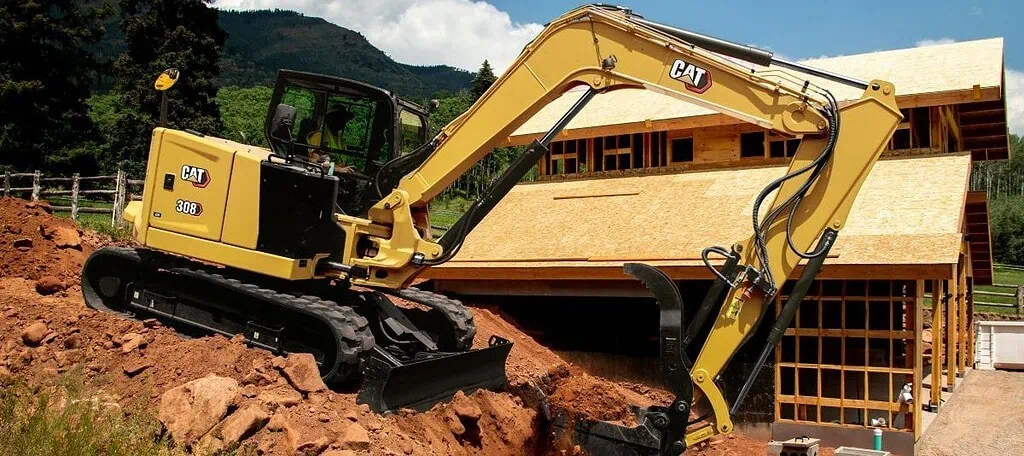
Consider Buying at Auction
Equipment auctions offer opportunities to find deals on Caterpillar excavators. Auctions often feature a wide selection of machines at competitive prices.
The table below outlines the pros and cons of buying at auction:
| Benefit | Drawback |
| Potential for lower prices | Limited inspection opportunities |
| Wide selection of equipment | Competitive bidding environment |
| Quick transaction process | Risk of buying a machine with hidden problems |
However, buying at auction also presents risks. Inspection opportunities may be limited compared to dealers or private sellers. Thorough preparation and strategic bidding are crucial.
Be Prepared to Negotiate
Negotiation is key, whether buying from dealers, private sellers, or at auction. Most sellers are open to price reductions to finalize a deal, particularly for cash payments or multiple machine purchases.
The following table offers negotiation tips:
| Negotiation Tip | Description |
| Research market value | Know the fair market price of the excavator you’re interested in. |
| Identify potential flaws | Thoroughly inspect the machine and identify any cosmetic or mechanical issues that could justify a lower price. |
| Be confident and polite | Maintain a professional and respectful demeanor throughout the negotiation process. |
| Be prepared to walk away | Don’t be afraid to walk away if the seller is unwilling to meet your price expectations. |
| Highlight competing offers | If you have received lower offers from other sellers, use this information to leverage a better price. |
| Offer cash payment | Cash payments can be attractive to sellers as they avoid financing costs and risks. |
| Bundle purchases | If you are purchasing multiple machines, you may be able to negotiate a discount on the overall package. |
A client from Qatar saved thousands by negotiating with a dealer on a used CAT 330 excavator. He researched the machine’s market value and convinced the dealer to lower the price by highlighting minor cosmetic flaws.
Understanding Hidden Costs and Long-Term Value
While the initial purchase price is a significant factor, it’s crucial to consider the hidden costs and long-term value of a Caterpillar excavator to make a truly informed decision. Focusing solely on the upfront price can lead to overlooking expenses that significantly impact the overall cost of ownership.
Beyond the initial purchase price, factors like maintenance costs, fuel consumption, potential downtime, and resale value significantly impact the long-term value of a Caterpillar excavator. Ignoring these aspects can lead to unexpected expenses and a less profitable investment.
The following table outlines some of these often-overlooked costs and their potential impact:
| Cost Category | Description | Potential Impact |
| Maintenance & Repairs | Regular maintenance (oil changes, filter replacements) and unexpected repairs (hydraulic leaks, engine issues) can accumulate significantly over the excavator’s lifespan. | Increases operational expenses, reduces uptime, potentially shortens the excavator’s lifespan. |
| Fuel Consumption | Fuel costs are a major ongoing expense. More fuel-efficient models can save significant money over time. | Directly impacts profitability, especially for fuel-intensive applications. |
| Downtime | Time lost due to maintenance, repairs, or parts shortages. Downtime reduces productivity and can lead to project delays. | Lost revenue, project delays, potential penalties. |
| Insurance | Excavator insurance is essential for protecting your investment against accidents, theft, or damage. | Reduces financial risk in case of unforeseen events. |
| Transportation Costs | Costs associated with transporting the excavator to and from job sites. | Impacts project budget, particularly for remote locations. |
| Resale Value | The excavator’s value when you decide to sell or trade it in. Well-maintained machines with low hours typically command higher resale values. | Offsets the initial purchase price and reduces the overall cost of ownership. |
| Training Costs | Costs associated with training operators to safely and efficiently operate the excavator. | Improves operator performance, reduces the risk of accidents, and maximizes the excavator’s productivity. |
By carefully considering these factors and conducting a thorough cost-benefit analysis, you can choose a Caterpillar excavator that not only meets your immediate needs but also provides the best long-term value for your investment.
Conclusion
The price for a Caterpillar excavator varies upon several factors. Learn these factors, do your research, and negotiate effectively. Also consider the long term value. This will help you to get the best deal and the right machine for your needs. This complete guide provides everything you need to make an intelligent purchase considering both initial price and long term value.
Suivez-nous sur:Youtube.


